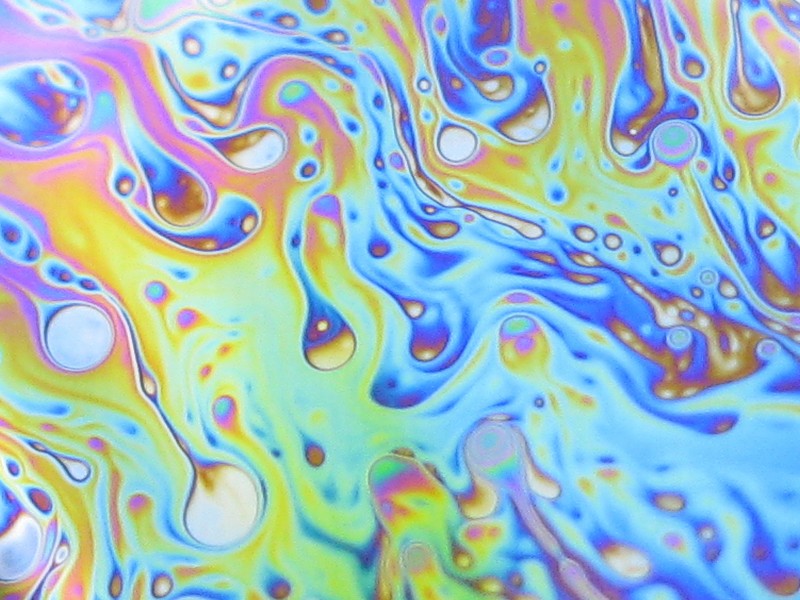An everyday kitchen can provide ample opportunities for observing optical phenomena, and as Mónika Landy-Gyebnár and Ágnes Kiricsi are not only good housewives but keen observers of such beauties, they always keep their eyes open for a chance of photographing something interesting while doing their household duties.
When you decide to drink your coffee in the early morning sunlight that just reaches your kitchen window, you might be lucky to get its steam of equal droplet size, and opening your eyes with the first sip of coffee you notice the colours of the drifting steam. You must have another sip to be sure that you really see the scattered sunlight and the display of iridescent colours.

If you use a spoon to stir your coffee with, don't run to the dishwasher immediately, but be a bit negligent, and wait till the coffee dries on it.
You may discover spectral colours again: patterns of thin film interference. Could it be the coffee's volatile oils or bacteria signalling problems of mouth hygiene?

Bisquits are always good to crunch with the morning coffee. Most of them are packed in a small cellophane bag that we can easily drop aside at the table by the window. And here comes the sun again - as its rays fall on the empty sachet, birefringence produces the well-known spectral colours again.
Not only human beings need a refreshment in the morning - our plants are also thirsty. And not only cellophane sachets are prone to showing birefringence, but transparent plastic flowerpots, too.
We have to pack a sandwich for the workday, maybe a good slice of ham - oops, the ham is also showing the spectral colours! The tiny (a muscle cell is about 10-80 microns in diameter), regularly arranged cells of the meat behave like the water droplets of clouds.

When the office hours are over, we still have some activities at home: for example making dinner for the family. Let's treat them with some meat balls, fried delicious in hot rainbow-coloured oil. Yes, rainbow coloured, as the afternoon sun still shines in, and the transparent oil bottle is placed in front of the window. You don't necessarily need a usm filter (or a usm sieve :)) to see the caustic patterns.

But be careful! Never cover hot food with a foil, otherwise they might produce colours again. First spectral ones on the foil, which we are happy about, but later a sickly shade of green on the meat itself. In this second stage, don't hesitate to throw the food into the dustbin.
Towards the end of the day, the work of the housewife has not ended yet. She's still on duty in the kitchen, looking at the pile of dirty dishes that has been produced.While the hot water gathers in the sink, it also steams a bit. There's no evening without a good streetlamp corona - you only have to look outside for a moment! The hot vapour has precipitated on the cold glass of your kitchen window, so the long day's last phenomenon wishes you good night with a colourful display.
Let's hope that reading so much about these household duties won't cause you nightmares of mugs carelessly washed up, and that one evening a brave man sits in front of the computer, and writes an article about the optical phenomena observed during his weekend-long tinkering in the workshop.
 After the twilights had been getting normal through the past three weeks, where hardly any volcanic aerosoles from Sarychev volcano had been measured, I was very astonished when I saw an intense purple light with crepuscular rays about half an hour before sunrise (sun elevation at -6°) in the morning of November 17. The crepuscular rays crossed the whole sky near the horizon, converging at the antisolar point (1 - 2 - 3).
After the twilights had been getting normal through the past three weeks, where hardly any volcanic aerosoles from Sarychev volcano had been measured, I was very astonished when I saw an intense purple light with crepuscular rays about half an hour before sunrise (sun elevation at -6°) in the morning of November 17. The crepuscular rays crossed the whole sky near the horizon, converging at the antisolar point (1 - 2 - 3).




































